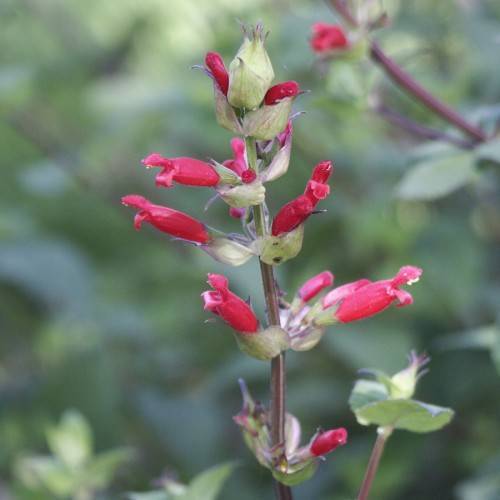
sage
Salvia holwayi
Cycle:
Herbaceous Perennial
Watering:
Average
Hardiness Zone:
9 - 11
Flowers:
Flowers
Sun:
Full sun,part shade
Leaf:
Yes
Growth Rate:
Low
Maintenance:
Low
Drought Tolerant:
Yes
Salt Tolerant:
Yes
Care Level:
Medium
watering
Sage (Salvia holwayi) needs regular watering to stay healthy and blooming. Water the plant when the top inch of soil is dry, and be sure to keep the soil slightly moist, not soggy. Water the plant deeply, so that moisture reaches the plant's roots for optimal health. Once weekly should be sufficient for the plants in warmer months, and every 2 weeks should be fine in cooler months. Avoid constant water and ensure that your container has appropriate drainage. To check the soil moisture, use your finger to see how far down the moisture has reached. If it has only reached an inch down, it’s time to give your sage a drink.
sunlight
Sage (Salvia holwayi) plants require an average of 6 hours of direct sunlight each day. When grown in pots, they perform best when placed in an area that receives full sun for at least half of the day, such as a south or west-facing window. For garden-grown plants, an area with full sun for the majority of the day is ideal. Exposure to extreme temperatures is not recommended. Sage plants should also be protected from intense afternoon summer sunlight, if possible. When planting sage plants outdoors, provide partial shade in the afternoon to create an ideal growing environment. Plants in containers should be moved indoors during extreme heat or cold to protect them from injury.
pruning
Sage (Salvia holwayi) should be pruned twice a year – once in the spring and once in the fall. During the spring pruning, remove any dead or damaged branches and selectively trim the remaining branches to monitor the plant's shape. In the fall, prune the remaining branches back to 1/4 of its original growth. While pruning, make sure to use clean and sharp pruners, and take care to not injure the plant. Take care not to prune too much and to leave some healthy foliage, as pruning too much can damage the plant's overall health. Additionally, if needed, deadhead the flowers throughout the season.
